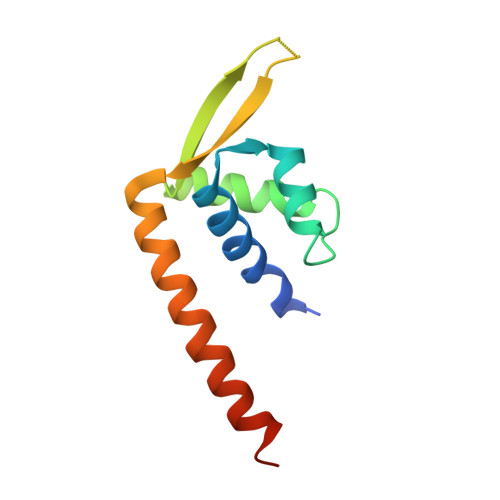Structure-based molecular characterization of the LltR transcription factor from Listeria monocytogenes.
Kim, J., Park, J., Choi, Z., Hong, M.(2022) Biochem Biophys Res Commun 600: 142-149
- PubMed: 35219103
- DOI: https://doi.org/10.1016/j.bbrc.2022.02.067
- Primary Citation of Related Structures:
7WJP - PubMed Abstract:
Listeria monocytogenes is a psychrotrophic food-borne pathogenic bacterium that causes listeriosis. Due to its unusual adaptation, an ability to grow at extended temperatures ranging from 4 to 45 °C, L. monocytogenes is notoriously hard to control in food-manufacturing processes. In addition, the growing number of antibiotic-resistant L. monocytogenes strains have made listeriosis steadily refractory to clinical treatments and can lead to serious life-threatening diseases, such as sepsis and meningitis, in immunocompromised persons and neonates. Transcription factors that belong to the PadR family play a key role in bacterial survival against unfavorable environmental stresses. The LltR protein from L. monocytogenes was identified as a PadR-type transcription factor and was shown to be required for bacterial growth adaptation at low temperatures. Despite the functional significance of LltR in listeria survival and pathogenesis, our molecular understanding of the LltR-mediated transcriptional regulation is highly limited. Here, we report the crystal structure of LltR and reveal the operator DNA recognition mechanism used by LltR. LltR dimerizes into an isosceles triangle-like shape and requires a winged helix-turn-helix motif for dsDNA recognition. Indeed, LltR and putative operator dsDNA binding was observed and suggests a transcriptional repression of the llfR-lmo0600-lmo0601 operon by direct interaction between the LltR transcription factor and its promoter region. Structure-based comparative and mutational analyses showed that LltR interacts with dsDNA via a unique strategy that combines both LltR-specific and PadR family-common mechanisms.
- Division of Biological Science and Technology, Yonsei University, Wonju, 26493, Republic of Korea.
Organizational Affiliation:
















